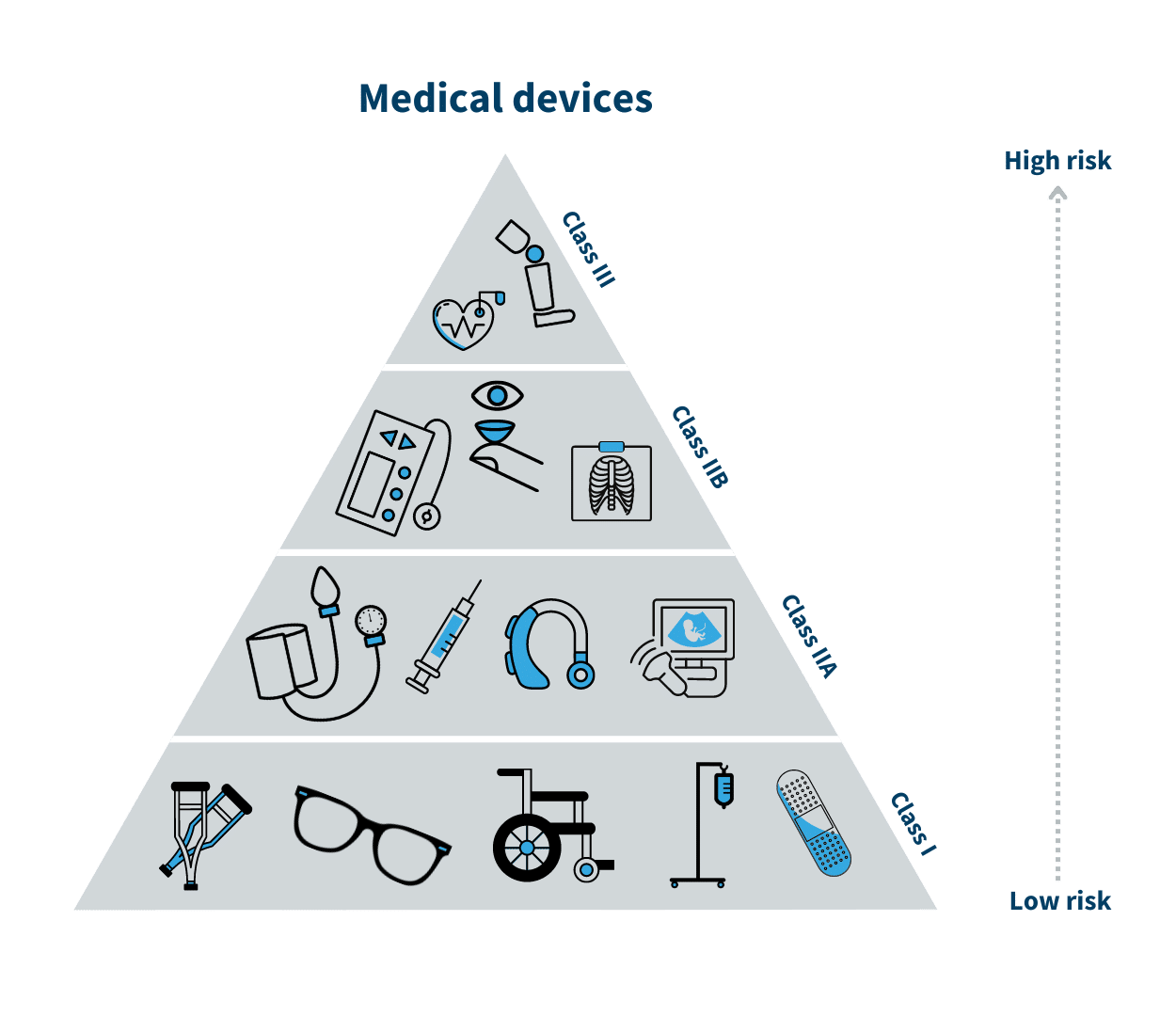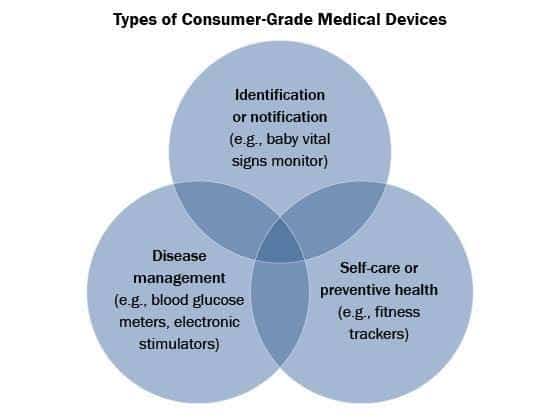In the past, science fiction books and movies dreamed of wearable health technology. “Star Wars” featured the “Bacta Spray” for quick healing. “Star Trek” had VISORs to help a blind character see. These futuristic ideas are now real. They are changing how we manage our health. Today, smartwatches track our daily activities. Advanced biosensors provide continuous medical information. Each piece of technology is transforming how we relate to healthcare.
In addition to that, the market for wearable health technology itself is booming. As proof, Mordor Intelligence expects the market to grow to USD493.26 billion by 2029 from its current USD186.48 billion. This suggests its growth at a compound annual rate of 17.6%. Such growth reflects rising popularity. It touches on the fact that wearable technology has the potential to transform health monitoring and management, changing how people perceive and take care of their health.
Overview of the Wearable Market in Healthcare
Consumer interest in wearable healthcare, along with advanced technology, clearly drives the market. To understand this interest better, experts categorize wearable devices into medical-grade and consumer-grade.
Medical-grade wearables are devices crucial in clinical settings. They go through rigorous testing and often need FDA clearance. They are in classes, from low-risk class I to high-risk class III, ranging from blood pressure monitors, blood sugar monitors, heart rate monitors, to compression socks. Their main purpose is to give accurate data for clinical decisions and so are used for remote patient monitoring after surgery.

Unlike medical-grade, consumer-grade wearables are most typical and therefore dominate the market. These include smartwatches, fitness trackers, and smart clothing. Their accessibility means consumers demand more of these real-time health and wellness monitoring devices. The adoption of 5G technology plays a big role as well in this demand. Various smartphone apps for health management also help. Consumers prefer these devices owing to their convenience as they provide immediate feedback on physical activity, sleep patterns, and other health metrics that until now were not available.
Current Innovations in the Future of Wearable Health Tech
The world we live in is full of beautiful changes in the wearable health technology market, contributing to continuous innovation. Most noteworthy is the inclusion of artificial intelligence in wearables. Wearables can now be fitted with AI: insight to deduce health in a personalized manner from all the data they have gathered, even into the future. This could be the analytic insight that is predictive about even future health. This means that a wearable can now track not just your current health but ways you can get potential health issues before they even get severe. For instance, an AI-powered wearable will inform the user about an irregular rhythm of the heart or another issue that might be related to diabetes.
The others, in contrast, are promising extreme advancements in biometric sensors. These new sensors are designed to measure much more with much greater accuracy. They include innovations, such as those that can continuously measure blood glucose levels non-invasive, hence no need to prick a finger. In addition, the more sophisticated ones can measure hydration and blood oxygen saturation and can even be used to detect signs of stress through electrodermal activity.
Miniaturization has also made health tech wearable. Simultaneously, the devices have become noticeably much smaller, more comfortable, and less visible. For example, a bright ring and adhesive patches embed most functions that large-sized devices, such as smartwatch, possess into something more convenient for everyday use. This digging toward smaller and more integrated devices is likely to continue, with health monitoring becoming more invisible and much less obtrusive.
Battery life, a long-standing challenge in wearable tech, is seeing significant improvements as well. Researchers are developing more efficient batteries and energy-harvesting technologies, which can extend the time between charges. Some wearables are now equipped with solar cells or kinetic energy harvesters that generate power from movement, further enhancing their practicality and user-friendliness.
The use of wearables in telemedicine is another exciting trend. Wearable devices can transmit health data directly to healthcare providers in real time, enabling remote monitoring and consultations. This can be particularly beneficial for patients with chronic conditions, allowing them to receive continuous care without frequent hospital visits. Telemedicine wearables can also help in managing post-operative care by ensuring that patients are recovering as expected and alerting doctors to any complications early.
Finally, the integration of wearables with smart home systems is on the rise. Wearable devices can now sync with home health equipment and smart home assistants, creating a comprehensive health monitoring ecosystem. For example, a wearable can trigger a smart scale to take a reading when you step on it or alert your smart speaker to remind you to take your medication.
Implications of Wearable Health Tech Now and in the Future
The rise of wearable health technology brings both promising advancements and significant challenges. As these devices become more integrated into everyday life, their impact on healthcare is profound, but not without complications.
One major implication is the issue of data accuracy and reliability, especially with consumer-grade wearables. These devices, unlike their medical-grade counterparts, do not undergo stringent regulatory scrutiny. This lack of oversight raises concerns about the precision of the health data they provide. Additionally, many consumer wearables face practical challenges like short battery life, which necessitates frequent charging, making them less convenient for sustained use. This is particularly problematic for older adults who may find these devices difficult to operate due to small text, complex instructions, and cumbersome clasps.
The sheer volume of data generated by wearables is another critical issue. While the availability of real-time health data can be beneficial, it often exceeds our current ability to manage and utilize it effectively. For example, after a patient with congestive heart failure is discharged, wearables could theoretically monitor their recovery by tracking blood pressure and heart rate. However, in practice, this means primary care providers, who are already managing numerous patients, would need to continuously review and respond to these data streams. This situation underscores the need for advanced analytics tools and automation to help healthcare professionals identify significant trends rather than sifting through raw data.
Moreover, the integration of wearables with existing healthcare systems poses technical and logistical challenges. Many health organizations lack the necessary computing power and infrastructure to process the vast amounts of data generated by wearables. This is pushing some towards cloud-based solutions, which offer the scalability needed to handle extensive data processing and AI-driven analytics. However, transitioning to cloud-based systems involves its own set of challenges, including cost and data security concerns.
Speaking of security, as wearables become more prevalent, the need for robust device identity management and verification at the point of care becomes increasingly important. Ensuring that the data collected from these devices is secure and that the devices themselves are protected against unauthorized access is crucial to maintaining patient trust and privacy.
Conclusion
Wearable health technology holds immense potential to revolutionize healthcare by providing continuous, real-time monitoring and data collection. However, for these benefits to be fully realized, significant challenges related to data accuracy, system integration, data management, and security need to be addressed. The future of wearable health tech will depend on our ability to develop solutions that balance these complex demands while enhancing the overall efficiency and effectiveness of healthcare delivery.


